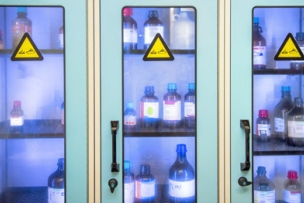Want to give a boost to safety culture? Consider implementing the 14 elements of the Process Safety Management standard—even if you use no toxic chemicals on your shop floor.
Although the Occupational Safety and Health Administration specifically created the Process Safety Management standard to address how businesses handle hazardous chemicals, it’s an approach that any safety team can use to develop a framework for its safety program.
OSHA designed PSM as an analytical tool to help companies prevent harmful chemicals from being mishandled or released.
What Is OSHA’s Process Safety Management Standard?
The Process Safety Management standard sets guidelines for managing the release of dangerous and toxic chemicals. While there has been an increasing push to reduce the use of the most toxic chemicals in metalworking, there is still enormous risk of exposure in some shops to chemicals that can harm and even kill.
“The Process Safety Management standard targets highly hazardous chemicals that have the potential to cause a catastrophic incident,” OSHA notes in its Process Safety Management Guidelines for Compliance. “The purpose of the standard as a whole is to aid employers in their efforts to prevent or mitigate episodic chemical releases that could lead to a catastrophe in the workplace and possibly in the surrounding community.”
That means that in some instances, larger metalworking and manufacturing plants must comply with the PSM standard for highly hazardous chemicals, OSHA 1910.119.
How Can OSHA’s PSM Improve Your Safety Culture?
Clearly, if highly toxic chemicals are in use, your company must comply with PSM.
But here’s the thing: PSM is also a useful analytical tool for establishing the elements of a robust safety program—even if your company uses no highly hazardous chemicals. It’s a valuable approach because it looks across the entire process, taking an analytical perspective that is helpful when dealing with safety generally.
“Increasingly companies are turning to PSM as a best practice, regardless of whether they are engaged in covered processes,” notes a post on the Intelex Technologies blog.
A chief reason beyond the established PSM framework is that it focuses on employee involvement, which is critical to drive a culture of safety.
“The PSM standard places an appropriate level of importance on employee participation, acknowledging that the ability to influence companywide employee participation in safety initiatives can make or break safety outcomes,” the Intelex post adds.
If you need chemical personal protective equipment or spill control and containment gear, here’s a safety selector tool to help you compare products






Talk to Us!
Leave a reply
Your email address will not be published. Required fields are marked *